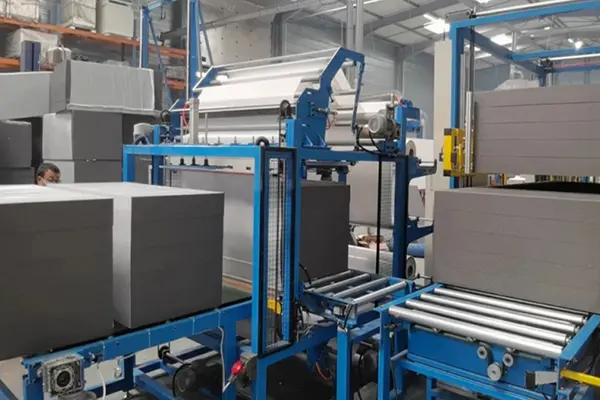Cutting foam is a common task in crafting, model-making, and DIY projects, as foam is a lightweight and versatile material. However, traditional cutting tools can leave jagged edges, messy cuts, and scattered particles, especially with certain types of foam. For a smooth, precise, and efficient method, many people turn to a hot wire foam cutter. But what exactly is a hot wire foam cutter, and how does it work? In this article, we’ll explore whether you can use a hot wire to cut foam effectively, and we’ll delve into the advantages, limitations, and best practices of using this tool.
What is a Hot Wire Foam Cutter?
A hot wire foam cutter is a specialized tool designed specifically for cutting foam. It consists of a thin wire, usually made from a high-resistance material like nichrome (nickel-chromium alloy), that heats up when an electric current passes through it. This wire reaches temperatures hot enough to slice through foam, melting it rather than cutting it in a traditional sense.
The heat softens the foam around the wire, allowing for smooth and clean cuts without any tearing or fraying. Hot wire foam cutters come in various types, from handheld devices for simple cuts to larger table-mounted versions for more complex and precise cuts. They are widely used by hobbyists, artists, and professionals for creating intricate designs and clean edges in foam-based projects.
Why Use a Hot Wire Foam Cutter?
- Clean and Precise Cuts: Traditional tools like knives or saws can leave rough edges, making the foam look uneven. A hot wire foam cutter, on the other hand, melts through the foam, resulting in smooth and even cuts with minimal debris. This is particularly important for artists and model-makers who require precision.
- Less Mess: When you cut foam with a knife or other mechanical tools, it can create a lot of dust and small foam particles. The hot wire foam cutter eliminates this issue by melting the foam rather than cutting it physically. This means less mess and fewer particles to clean up after the job.
- Versatile for Different Types of Foam: Hot wire foam cutters are suitable for various types of foam, including expanded polystyrene (EPS) and extruded polystyrene (XPS), which are common in model-making and insulation. However, it’s important to avoid using hot wire foam cutters on certain types of plastic foam that may release toxic fumes when heated.
- Easy to Use for Complex Shapes: If your project involves curves, angles, or intricate patterns, a hot wire foam cutter makes it easier to achieve precise and consistent shapes. The heated wire allows for easy maneuverability through the foam, whether you are creating a straight line or a complex curve.
Safety Precautions When Using a Hot Wire Foam Cutter
Though hot wire foam cutters are useful, they must be handled with care to ensure safety:
- Ventilation: Cutting foam with heat can produce fumes, especially if the foam contains chemicals. Always work in a well-ventilated area or use a fan to direct fumes away from your face.
- Protective Gear: Wear gloves and protective eyewear to prevent burns from the hot wire and to shield your eyes from any small particles.
- Temperature Control: Some hot wire foam cutters come with adjustable temperatures. Use the lowest effective temperature to avoid overheating and releasing excess fumes.
- Avoid Certain Foams: Some foams, particularly those with flame-retardant additives, can release toxic fumes when heated. Stick to safer foams, like EPS and XPS, and avoid foams that are not explicitly marked for hot wire cutting.
Limitations of a Hot Wire Foam Cutter
While a hot wire foam cutter has many advantages, it’s not suitable for every project or material:
- Limited to Certain Types of Foam: As mentioned, hot wire foam cutters are ideal for EPS and XPS foam but are not suitable for all foam types. Avoid using them on polyurethane or polyethylene foams, as these can emit harmful fumes.
- Cutting Thickness: Depending on the model, hot wire foam cutters may struggle with very thick foam. For larger or denser foam blocks, industrial hot wire cutters or other specialized tools may be required.
- Electricity-Dependent: Hot wire foam cutters require a power source, which can limit portability. Cordless options are rare, and some models can be cumbersome to use if you don’t have easy access to an outlet.
Tips for Using a Hot Wire Foam Cutter Effectively
To get the best results with a hot wire foam cutter, keep these tips in mind:
- Slow and Steady: Don’t rush the cutting process. Move the foam steadily along the wire to allow the heat to melt through without tearing.
- Practice First: If you’re new to hot wire cutting, practice on scrap foam pieces. This helps you get a feel for the tool and ensures precision when you move to your final project.
- Use Guides for Straight Lines: For straight cuts, consider using a guide or ruler along with the hot wire foam cutter to ensure accuracy.
Conclusion
A hot wire foam cutter is a powerful tool for achieving smooth, clean, and intricate cuts in foam. While it’s not suitable for every type of foam or situation, it’s the go-to choice for many crafters, hobbyists, and professionals when working with EPS or XPS foam. By following safety precautions and best practices, you can maximize the effectiveness of this tool and create impressive foam projects with ease. Whether you’re working on a model, an art piece, or even DIY insulation, the hot wire foam cutter can make foam cutting simple, precise, and enjoyable.
Post time: 11-12-2024






